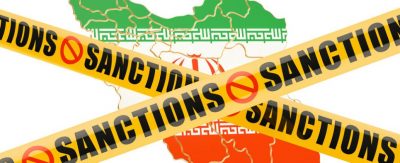US Sanctions Against Iran Allowed China to Penetrate Its Influence Deeper into Central Asia

All Global Research articles can be read in 27 languages by activating the “Translate Website” drop down menu on the top banner of our home page (Desktop version).
***
Sanctions have become a formidable weapon used by Washington to maintain pressure against China and suffocate Iran. The U.S. has become consumed with anti-Iranian hatred and Sinophobia and is waging a war on two fronts by using sanctions and economic pressure. Although it may seem like two separate issues, sanctions that hit Tehran do not fail to affect Beijing, its main economic partner. However, there is also a major contradiction in Washington’s sanctions policy against Iran, especially regarding Central Asia.
Tehran has been under a U.S. sanctions regime that has steadily increased since the success of the Iranian Revolution in 1979. The arrival of Donald Trump to the White House in 2016 marked a clear intensification of sanctions against Iran and a new trade war against China. With Washington’s exit from the Iranian nuclear deal in 2018, the U.S. wanted to reduce exports from the Islamic Republic to zero. More importantly, Washington wanted to prohibit other countries from importing Iranian energy. Although the sanctions are obviously aimed against the Islamic Republic, they are also a part of a larger economic war against China, the U.S.’ greatest economic adversary.
Sanctions under former president Barack Obama were seen as a great solution to force an enemy country to negotiate or have their leaders removed from power without resorting to military force – but as proven, this utterly failed if we look at the Syrian, Russian and Venezuelan examples. In the Iranian case, sanctions were hoped to strike two enemies at once, Tehran and Beijing. It was hoped that sanctions would push Iran to the negotiating table whilst simultaneously hampering the country’s hydrocarbon supplies to China.
Therefore, it is not only Iran’s enrichment of uranium that is in Washington’s crosshairs. China has become Iran’s main economic partner, which greatly frustrates Washington as it hinders their efforts to topple the Mullahs from power.
In July 2020, Iran and China signed a strategic cooperation agreement for a period of 25 years. In return, China receives discounted gas and oil from Iran – in fact they receive it 30% cheaper than the market rate. It is estimated that China has agreed to inject $280 billion to $400 billion of Foreign Direct Investment into Iranian oil, gas and petrochemical industries as part of the 25-year Cooperation Program. Beijing and Tehran, despite their political differences (China is ruled by a communist government and Iran is an Islamic theocracy), they have the mutual goal of resisting U.S. unilateralism.
China is using Iran as a lever of influence in the region, and Iran is using China to alleviate its economic difficulties. However, the U.S. withdrawal from the nuclear agreement encouraged and consolidated this rapprochement, something Trump and his policymakers did not anticipate. The 25-year Cooperation Program is a collaboration at all levels and is a political reorientation. This collaboration allows Tehran to somewhat circumvent U.S. sanctions.
Because of the 25-year Cooperation Program, Iran has become a strategic passage for the Belt and Road Initiative to connect Western China and Central Asia with Turkey and European markets. However, Sino-Iranian collaboration is slowed down by sanctions as transactions are blocked. Taking a dim view of Beijing’s ambitions, American sanctions against Iran also hope to curb Chinese economic expansionism.
In Iran, only the Chabahar Port is exempt from American sanctions. This is because the reconstruction of Afghanistan is a goal for Washington and the Indian-invested Chabahar Port plays an important role in this endeavor. The Chabahar Port is more important towards the U.S.’ Afghanistan policy as it is Indian-invested, unlike the nearby Gwadar Port in Pakistan which is Chinese-invested. Chabahar and Gwadar Ports, less than 200km away from each other, are competing to become the main port to service Central Asia.
And here is the contradiction.
The real goal of not implementing sanctions on Chabahar Port is to allow India access to Afghanistan and therefore Central Asia to challenge China, and perhaps even Russia, from having greater influence in the landlocked region. This is further proof of American hypocrisy when it comes to challenging China as it is willing to overlook decades long sanctions and pressure against Iran in pursuit of weakening Beijing. This is even though intensified sanctions against Iran are also aimed against China.
By sanctioning and attempting to isolate Iran, Washington has in actual fact allowed Chinese penetration into the country and thus have even greater leverage and influence in Central Asia. This is because the Iran borders Afghanistan and Turkmenistan, countries that go onwards to Tajikistan and Uzbekistan, and eventually Kazakhstan. U.S. policymakers either did not consider this or grossly miscalculated. Although India may gain access to Central Asia via the Chabahar Port, it will not be able to compete with Chinese economic dominance in Iran, something which occurred in part because of U.S. sanctions.
*
Note to readers: please click the share buttons above or below. Forward this article to your email lists. Crosspost on your blog site, internet forums. etc.
This article was originally published on InfoBrics.
Paul Antonopoulos is an independent geopolitical analyst.
Featured image is from InfoBrics

